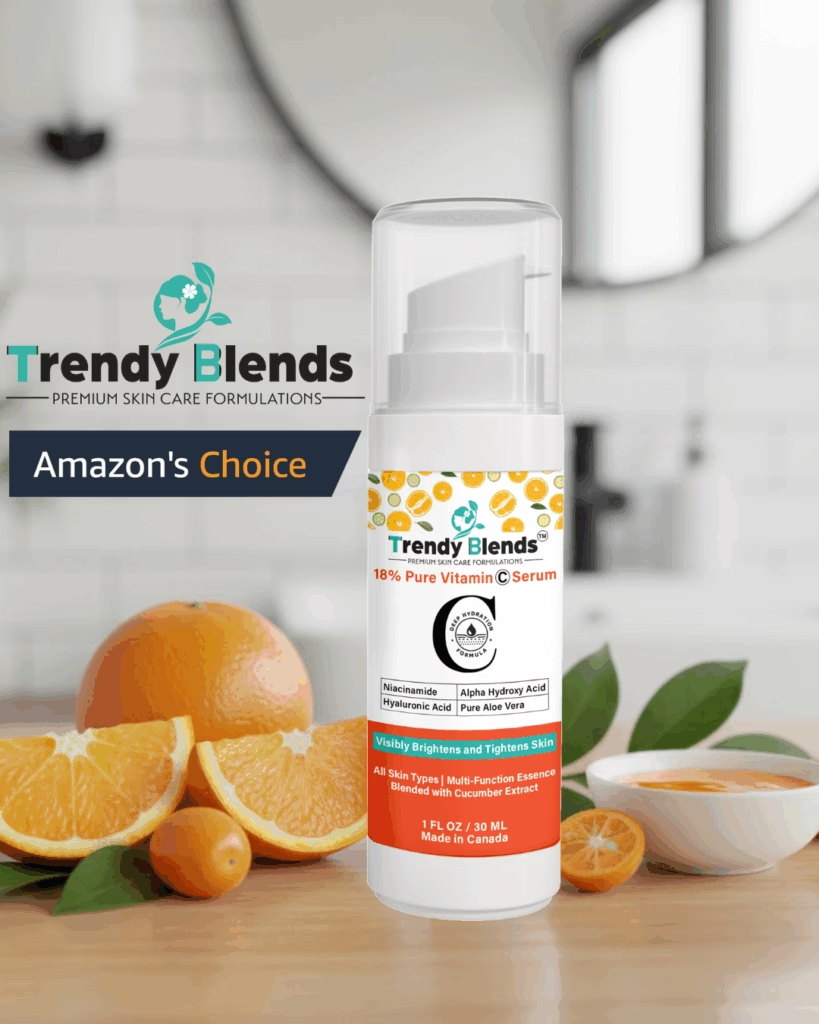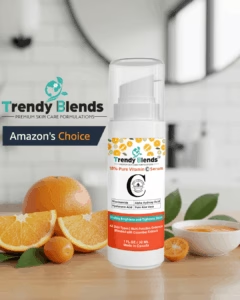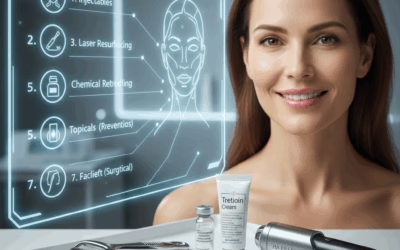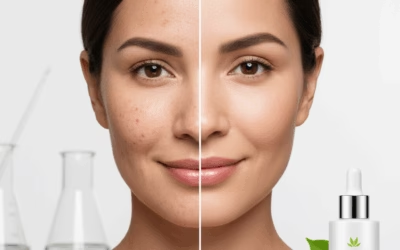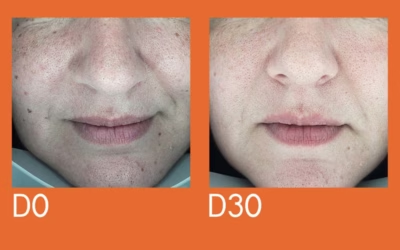7 Critical Insights: PDRN Serum vs Vitamin C Serum for Anti-Aging.

Table of Contents
PDRN Serum vs Vitamin C Serum for Anti-Aging
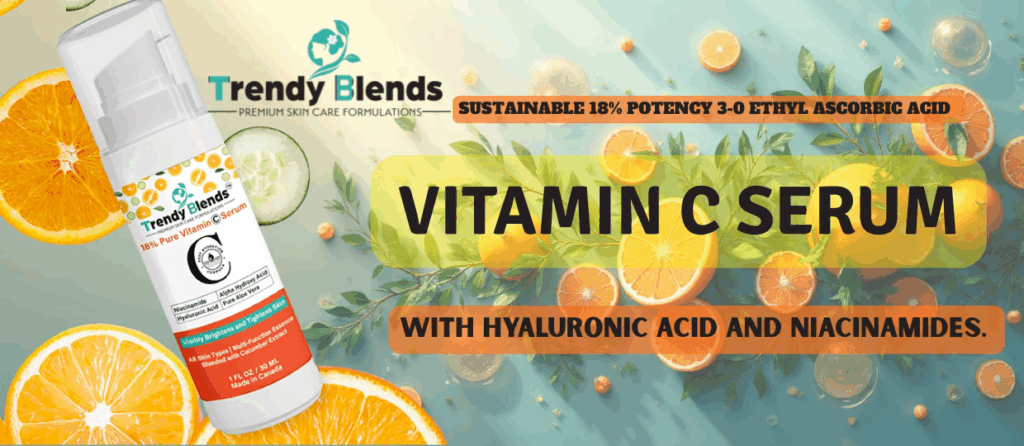
The quest for youthful, radiant skin is a never-ending journey for many. In the ever-evolving world of skincare, new ingredients and formulations emerge constantly, promising to turn back the clock. Two powerhouse ingredients that have garnered significant attention for their anti-aging properties are Polydeoxyribonucleotide (PDRN) and Vitamin C Serum.
Choosing between a PDRN serum and a Vitamin C serum can be a daunting task. Both are lauded for their ability to combat signs of aging, but they work through distinct mechanisms and offer unique benefits. This article dives deep into the 7 Critical Insights: PDRN Serum vs Vitamin C Serum for Anti-Aging, helping you make an informed decision tailored to your specific skin concerns.
Understanding the Core Mechanisms
Before we pit these two titans against each other, it’s crucial to understand how they function at a cellular level.
Vitamin C: The Antioxidant Champion
Vitamin C, in its various forms (most commonly L-Ascorbic Acid), is a potent antioxidant. Its primary role in skincare is to neutralize free radicals – unstable molecules that damage skin cells and contribute to premature aging, such as wrinkles and loss of elasticity. It also plays a vital role in collagen synthesis, the protein responsible for keeping skin firm and supple.
PDRN: The Regenerative Powerhouse
PDRN, derived from salmon milt, is a complex mixture of deoxyribonucleotides. Its mechanism of action is more regenerative. PDRN works by stimulating cell growth, promoting tissue repair, and improving skin elasticity and hydration. It activates specific receptors in the skin, signaling cells to repair and rejuvenate themselves.
Insight 1: The Antioxidant vs. Regenerative Approach
The most fundamental difference lies in their primary function. Vitamin C serums are primarily antioxidant in nature. They act as a shield, protecting your skin from external aggressors like UV radiation and pollution that lead to oxidative stress.
PDRN serums, on the other hand, are focused on regeneration. They don’t just protect; they actively encourage your skin’s own repair processes. This means PDRN can address existing damage and promote the creation of new, healthy skin cells. When considering PDRN serum vs Vitamin C serum for anti-aging, this distinction is paramount.
Insight 2: Collagen Production – Different Pathways
Both PDRN and Vitamin C are known to boost collagen production, a key factor in maintaining youthful skin. However, they achieve this through different pathways.
Vitamin C is an essential cofactor for the enzymes involved in collagen synthesis. Without sufficient Vitamin C, your body cannot effectively produce new collagen. It’s like providing the building blocks and tools for the construction crew.
PDRN’s approach to collagen is more indirect but equally effective. By stimulating fibroblasts (the cells that produce collagen and elastin), PDRN encourages the skin to ramp up its natural collagen production. It’s essentially motivating the construction crew to work harder and more efficiently. This regenerative action can lead to plumper, firmer skin over time.
Insight 3: Targeting Specific Aging Concerns
When you’re evaluating PDRN serum vs Vitamin C serum for anti-aging, consider the specific concerns you want to address.
Vitamin C excels at:
- Brightening: It effectively reduces hyperpigmentation, dark spots, and uneven skin tone by inhibiting melanin production.
- Protecting: Its antioxidant properties make it a daily essential for defending against environmental damage.
- Improving Texture: By promoting collagen, it can subtly refine skin texture.
PDRN serums are often more effective for:
- Repairing Damaged Skin: They are excellent for post-procedure recovery (e.g., after lasers or microneedling) and for healing scars.
- Deep Rejuvenation: Their regenerative properties can lead to more significant improvements in skin elasticity and firmness.
- Hydration: PDRN can help improve the skin’s moisture-retention capabilities.
Insight 4: Stability and Formulation Challenges
Vitamin C, particularly L-Ascorbic Acid, is notoriously unstable. It’s sensitive to light, air, and heat, which can cause it to oxidize and become less effective, or even irritating. Formulators work hard to stabilize Vitamin C through specific packaging (airless pumps, dark glass bottles) and by using derivatives that are more stable but sometimes less potent.
PDRN, being a more complex biomolecule, also requires careful formulation to ensure its stability and delivery into the skin. However, its inherent structure often lends itself to more stable serum formulations compared to pure L-Ascorbic Acid. This means a PDRN serum might maintain its efficacy for longer once opened.
Insight 5: Potential for Irritation and Sensitivity
This is a crucial aspect to consider in the PDRN serum vs Vitamin C serum debate.
Vitamin C: High concentrations of L-Ascorbic Acid can cause stinging, redness, and irritation, especially for those with sensitive skin. While stable derivatives are generally gentler, sensitivity is still a common concern. Patch testing is highly recommended.
PDRN: Generally, PDRN is considered to be well-tolerated and less likely to cause irritation. Its regenerative properties may even help soothe and repair compromised skin barriers, making it a good option for those who find Vitamin C too harsh. However, as with any new skincare ingredient, individual reactions can occur.
Insight 6: The Role in Skin Barrier Health
A healthy skin barrier is the foundation of youthful, resilient skin. Both ingredients can contribute, but in different ways.
Vitamin C can help strengthen the skin barrier over time by reducing inflammation caused by oxidative stress. A less inflamed skin is a healthier, more resilient skin.
PDRN has a more direct impact on barrier repair. By stimulating cell regeneration, it actively helps to rebuild and strengthen the skin’s natural protective layer. This is particularly beneficial for skin that has been weakened by environmental damage, harsh treatments, or underlying conditions.
Insight 7: When to Choose Which – A Practical Guide
Now, let’s synthesize these insights to help you make the best choice.
Choose a Vitamin C Serum if:
- Your primary concerns are brightening your complexion, reducing dark spots, and protecting your skin from environmental damage.
- You are looking for a powerful daily antioxidant defense.
- You have oily or acne-prone skin, as Vitamin C can sometimes help with blemishes.
- You have a slightly higher tolerance for potential tingling or redness.
Choose a PDRN Serum if:
- Your main goals are deep skin rejuvenation, improving elasticity, and reducing the appearance of fine lines and wrinkles already present.
- You are recovering from cosmetic procedures or have compromised skin barrier.
- You have sensitive skin and find Vitamin C too irritating.
- You are looking for a serum that actively promotes cell turnover and repair.
Can You Use Both?
Absolutely! For many individuals seeking comprehensive anti-aging results, combining both PDRN and Vitamin C serums can be highly effective. The key is to understand how to layer them and when to use them.
- Morning Routine: Vitamin C is often recommended for morning use due to its antioxidant properties, which provide protection against UV rays and pollution throughout the day.
- Evening Routine: PDRN serums can be used in the evening to capitalize on the skin’s natural repair cycle.
Important Note on Layering: Always introduce new products one at a time and patch test. When layering, apply the thinnest consistency product first, usually a Vitamin C serum, followed by a thicker PDRN serum. Ensure your skin is clean and dry between applications.
Beyond the Serum: Understanding Formulation and Quality
It’s vital to remember that not all serums are created equal. The effectiveness of both PDRN and Vitamin C serums depends heavily on the formulation, concentration, and quality of the ingredients.
- Vitamin C Derivatives: Look for serums that use stable and effective derivatives like Sodium Ascorbyl Phosphate, Magnesium Ascorbyl Phosphate, or Ascorbyl Glucoside if pure L-Ascorbic Acid proves too irritating.
- PDRN Concentration: The concentration of PDRN in a serum can vary. Higher concentrations generally yield more potent results, but also come with a higher price point.
- Added Beneficial Ingredients: Many serums combine PDRN or Vitamin C with other beneficial ingredients like hyaluronic acid for hydration, niacinamide for barrier support, or peptides for anti-aging.
Scientific Backing and Further Research
The efficacy of both ingredients is supported by scientific research.
Vitamin C: Numerous studies have documented the antioxidant and collagen-boosting benefits of Vitamin C in skincare. The NIH (National Institutes of Health) offers a wealth of research on Vitamin C’s role in skin health.
PDRN: Research into PDRN for aesthetic and therapeutic purposes is growing. Studies suggest its ability to promote wound healing and tissue regeneration. You can find scientific papers detailing its mechanisms on platforms like PubMed.
The Verdict: It’s Not About Better, It’s About Best FOR YOU
In the PDRN serum vs Vitamin C serum for anti-aging battle, there’s no single winner. Both offer remarkable benefits for achieving a more youthful complexion.
Vitamin C is your daily shield, combating free radicals and brightening your skin. PDRN is your regenerative specialist, actively repairing and rebuilding for profound rejuvenation.
By understanding these 7 Critical Insights: PDRN Serum vs Vitamin C Serum for Anti-Aging, you can confidently choose the serum that best aligns with your skin’s unique needs and your anti-aging goals. Whether you opt for one or strategically combine both, you’re investing in cutting-edge skincare for a more radiant, youthful you.
